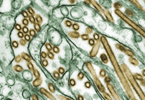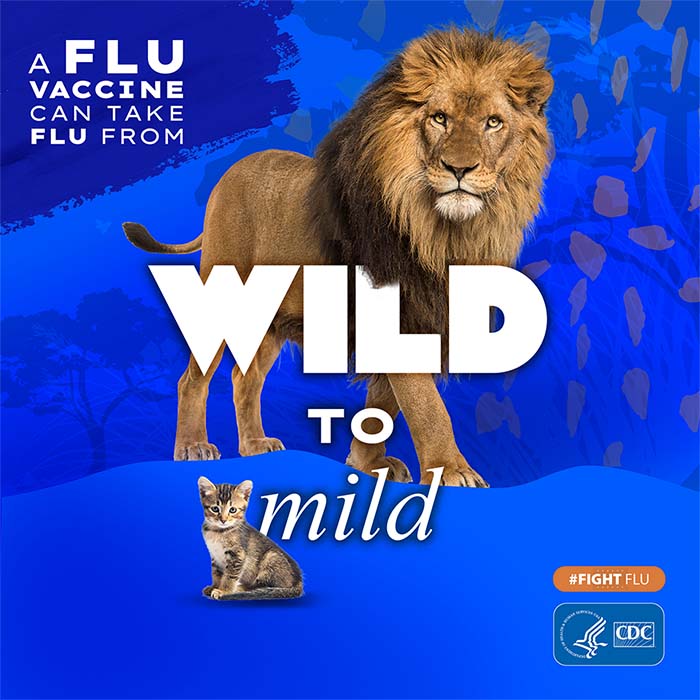Highly Pathogenic Avian Influenza A (H5N1) Viruses in Asia

September 1, 2011 — Recent media coverage stemming from a Food and Agriculture Organization (FAO) press release has contained misleading information about highly pathogenic avian influenza A (H5N1) viruses (“H5N1”) in Asia. Some of that media coverage has implied that there is a new, mutant variant H5N1 virus that is spreading in Asia, and that the risk to human health posed by this H5N1 virus has somehow been recently and dramatically raised. This is not true.
Highly pathogenic (deadly) avian influenza A (H5N1) virus infections in poultry and wild birds, resulting in high mortality, have been detected in Asia, the Middle East, Europe, and Africa since December of 2003. Currently, H5N1 viruses are widespread in poultry and wild birds in many countries in Asia, but rarely infect humans. When humans become ill with H5N1 virus infection, severe illness and death may occur. Sporadic human cases mainly occur after contact with infected poultry that were sick or dead, and have been reported in 15 countries. Like all influenza viruses, H5N1 viruses continue to evolve. The Centers for Disease Control and Prevention (CDC), the World Health Organization (WHO), World Organization for Animal Health (OIE), and Food and Agriculture Organization of the United Nations (FAO) conduct routine surveillance to monitor influenza viruses, including H5N1 viruses, for changes that may have implications for animal and public health. CDC and WHO surveillance efforts are geared toward human health. FAO and OIE are concerned with issues affecting food and agriculture.
Over time, H5N1 viruses have evolved into different groups, called “clades.” Since 2007, 12 different clades of H5N1 viruses have been identified. The FAO report and subsequent media stories focused on an H5N1 virus that has been given a nomenclature (name) of “clade 2.3.2.1”. However, this virus is not new. It was first detected in poultry during 2009 in Vietnam and evolved from viruses that had previously been circulating in Vietnam since 2005.
CDC has been watching the evolution of all H5N1 viruses closely. Changes in viruses that WHO and CDC look for specifically are those that could increase the threat to human health. There is nothing to indicate that clade 2.3.2.1 viruses pose any greater threat to human health than any of the other H5N1 viruses. The clade 2.3.2.1 viruses are very active viruses and are spreading more widely in poultry and wild birds. While this increases the possibility of human exposures to infected birds or poultry, it does not increase their ability to infect and transmit between people. However, as part of the U.S. government’s pandemic preparedness activities, a 2.3.2.1 vaccine virus candidate to protect humans against this virus already has been created so that vaccine production could begin rapidly if this virus were to change to infect humans and spread easily from person to person. The vaccine virus candidate is an exact match to currently circulating 2.3.2.1 viruses.
CDC does not believe the risk from H5N1 to humans has increased; however, the evolution of H5N1 viruses has implications for the poultry industry in parts of the world where H5N1 viruses are widespread among poultry. In many of these countries, poultry is routinely vaccinated to protect against infection with H5N1 viruses, which is frequently deadly to them. Vaccination of poultry against avian influenza viruses is a tool used to protect a food asset. The FAO report was drawing attention to the fact that the H5N1 poultry vaccines currently being used in Vietnam do not protect poultry against the new H5N1 clades. This is because the viruses have evolved since the H5N1 poultry vaccine viruses were chosen in 1996. While this development highlights the importance of updating the antigen composition of all influenza vaccines, it does not have any bearing on the issue of protecting humans from this virus.
In summary, H5N1 influenza viruses have been circulating among birds for many years, some are highly pathogenic, and infections in humans are uncommon. There have been no recent changes that pose any additional risk to humans.
More information on avian influenza can be found on the WHO website: Influenza at the Human-Animal Interface (HAI)
